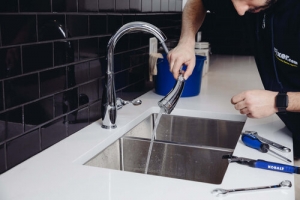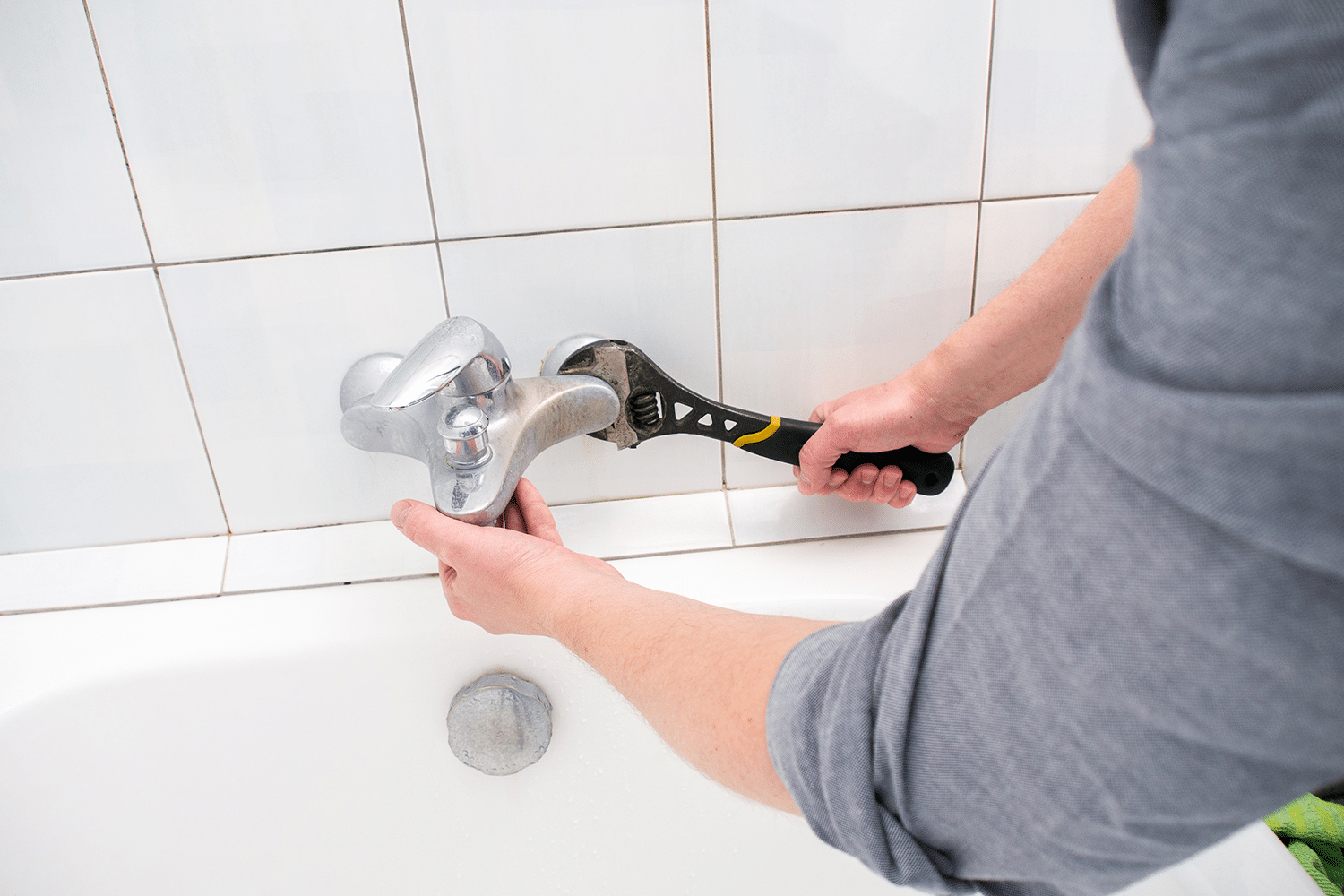My Motives Behind Addressing a Dripping Faucet
My Motives Behind Addressing a Dripping Faucet
Blog Article
Right here further down you can find some very good help and advice around Why It's Important to Fix Leaky Faucets.

Leaking taps could feel like a minor inconvenience, yet their influence surpasses simply the annoyance of the sound. From drainage to incurring unneeded economic expenses and wellness threats, neglecting a leaking tap can bring about different consequences. In this article, we'll look into why it's vital to address this usual family problem quickly and properly.
Waste of Water
Ecological Impact
Trickling faucets add significantly to water wastefulness. According to the Environmental Protection Agency (EPA), a single faucet trickling at one drip per secondly can squander greater than 3,000 gallons of water each year. This not only strains water resources however additionally affects environments and wild animals based on them.
Financial Prices
Raised Water Bills
Beyond the environmental impact, dripping faucets can inflate water bills substantially. The accumulated waste over time translates into higher utility expenditures, which can have been stayed clear of with prompt repair services.
Prospective Property Damages
Additionally, long term leaking can cause damage to components and surface areas bordering the faucet. Water accumulation can cause discoloration, deterioration, and also structural concerns if left neglected, leading to additional fixing expenses.
Health Problems
Mold And Mildew and Mildew Development
The constant existence of dampness from a leaking faucet produces an optimal setting for mold and mildew development. These fungis not only endanger indoor air high quality yet also position health and wellness risks, particularly for people with respiratory conditions or allergic reactions.
Waterborne Conditions
Stationary water in dripping faucets can become a breeding ground for microorganisms and various other microorganisms, raising the threat of waterborne conditions. Pollutants such as Legionella germs flourish in stagnant water, potentially resulting in serious ailments when consumed or breathed in.
DIY vs. Specialist Fixing
Benefits and drawbacks of DIY Repair
While some might attempt to deal with a trickling faucet themselves, do it yourself repair services feature their very own set of obstacles. Without appropriate knowledge and devices, do it yourself attempts can aggravate the problem or cause incomplete fixings, extending the trouble.
Benefits of Working With an Expert Plumber
Hiring an expert plumber makes sure that the underlying cause of the dripping faucet is attended to successfully. Plumbing professionals have the proficiency and devices to identify and repair faucet issues efficiently, conserving time and decreasing the threat of additional damages.
Step-by-Step Overview to Dealing With a Dripping Tap
Devices Needed
Before attempting to repair a trickling tap, gather the necessary devices, consisting of an adjustable wrench, screwdrivers, substitute components (such as washers or cartridges), and plumber's tape.
Usual Faucet Issues and Their Solutions
Recognize the kind of tap and the particular concern triggering the drip. Usual issues include damaged washers, corroded shutoff seats, or defective O-rings. Describe manufacturer directions or on-line tutorials for step-by-step support on repairs.
Preventive Measures
Routine Maintenance Tips
To avoid trickling taps, perform routine maintenance such as cleaning up aerators, evaluating for leakages, and changing damaged components promptly. Additionally, take into consideration mounting water-saving tools or updating to extra reliable components.
Value of Prompt Fixes
Resolving trickling faucets as soon as they're noticed prevents more water wastefulness and prospective damage, inevitably conserving both water and money in the future.
Effect On Building Worth
Perception of Well-Maintained Building
Preserving a residential property in good condition, including addressing maintenance concerns like leaking taps, boosts its perceived worth and desirability amongst possible buyers or renters.
Influence on Resale Worth
Characteristics with properly maintained plumbing components, consisting of taps, command greater resale worths in the property market. Dealing with leaking taps can add to a favorable impact throughout residential property examinations and arrangements.
Ecological Duty
Specific Payment to Preservation
Taking obligation for repairing dripping faucets straightens with more comprehensive initiatives toward water conservation and environmental sustainability. Every person's activities collectively make a significant influence on protecting precious sources.
Sustainable Living Practices
By focusing on punctual repair services and adopting water-saving behaviors, people contribute to lasting living practices that profit both present and future generations.
Final thought
Addressing a leaking tap exceeds plain convenience; it's a necessary step toward conserving water, decreasing economic prices, and protecting health and wellness and building. Whether through DIY repair work or expert help, doing something about it to fix dripping faucets is a little yet impactful method to advertise accountable stewardship of sources and contribute to a healthier, much more sustainable future.
Why Are My Faucets Dripping (And Can I Fix it Myself)?
Causes of a Dripping or Leaking Faucet
Whether you’re hearing drops of water falling and hitting a sink, or noticing water ooze out from the base of the spout, you shouldn’t ignore a dripping or leaking faucet. And, the good news is, sometimes you can fix the problem yourself.
In this article, we’ll review a few common causes of dripping and leaky. We’ll also walk you through some basic ways to find the problem and handle it without calling anyone — and let you know when to call in a pro.
But, no matter what the cause, or whether you can handle it on your own, the sooner you address it, the better.
Each drip may be a tiny amount of water. But, they all add up quickly. According to the U.S. Geological Survey, one faucet losing one drop every 20 seconds — five a minute — wastes around a liter of water every day, and 173 gallons a year.
Add in more than one in your house, and it’s a lot of water to waste. So, we’ll help you get to the bottom of things quickly.
Four Reasons Your Faucet May Be Dripping
Aerator is Damaged or Unseated Valve Seat is Corroded O Ring is Loose or Worn Out Part of the Assembly is Loose Aerator is Damaged or Unseated
If you unscrew the end of your faucet, you’ll find the aerator. It’s the little stem piece with a screen on it that shuts off the water circulation.
If it’s damaged, or if it’s not sitting right, it will allow water to pass through.
Valve Seat is Corroded
Next is the valve seat, which is connected to the washer. If the washer wasn’t in place correctly, then it could have ground against the seat. Over time, this damages the valve seat.
The problem could also be corrosion: Over time, the part has worn out, and it’s now allowing water to pass through.
O Ring is Loose or Worn Out
Since the o ring is only a small rubber gasket, it’s a common reason why the faucet is dripping. You’ll find it at the base of the faucet, and it’s there to keep water from coming out where it’s not supposed to.
However, it’s common for the o ring to wear out over time. When it does, you’ll notice a drip.
Part of the Assembly is Loose
So far, we’ve looked at a few small, specific parts. But, the problem could be anywhere in the assembly if something’s out of place.
Even if a part isn’t damaged, over time, it may have become loose or dislodged. It could be the parts we mentioned, or the aerator at the tip of the faucet, the stem itself,
Can I Fix a Leaky Faucet Myself?
Depending on the problem, and how handy you are, there’s a chance you can fix a leaky faucet without calling a professional. But, you do run the risk of making the problem worse.
If it’s a small drip, you can certainly try a few troubleshooting tactics. We’ll walk you through them in a moment.
But, no matter what, your first step should be shutting off the water coming into the faucet. You should find a shutoff valve under the sink on the pipes leading to it. Turn each one clockwise until they close tightly.
Next, make sure you have the right tools for whatever you’re attempting. It’s tempting to make do with what you have. But, you need the right ones for a reason: You’re often dealing with small parts that can break if you handle them carelessly.
If you’re feeling confident, here are some places to start.
Items Near the Tip of the Faucet
A few of the parts we mentioned — particularly the valve seat and washer — are located at the tip of the faucet where the water comes out. They’re easy to access, making it a good place to start.
Check the O Ring
To check the o ring, you’ll need to take off the spout at the base. It’s easiest on kitchen sinks with long spouts, versus the smaller, bulkier base on most bathroom sinks.
Either way, this can be tricky, so do it carefully and don’t force anything. If it’s not coming right off, you’re much better off calling in a pro than possibly breaking something.
For a kitchen sink, there’s usually a nut or coupling assembly at the base of the spout. These often slide off easily without using any tools.
Once you’ve disassembled those parts, gently but forcefully twist off the spout.
Then, you can see the o rings. There should be two of the rubber gaskets on the base. If they look worn or damaged, replace them, and see if that solves the problem.

We had been made aware of that report about Why It's Important to Fix Leaky Faucets through an acquaintance on a different web address. Loved our review? Please share it. Let another person locate it. Thanks for being here. Don't hesitate to come visit our website back soon.
Report this page